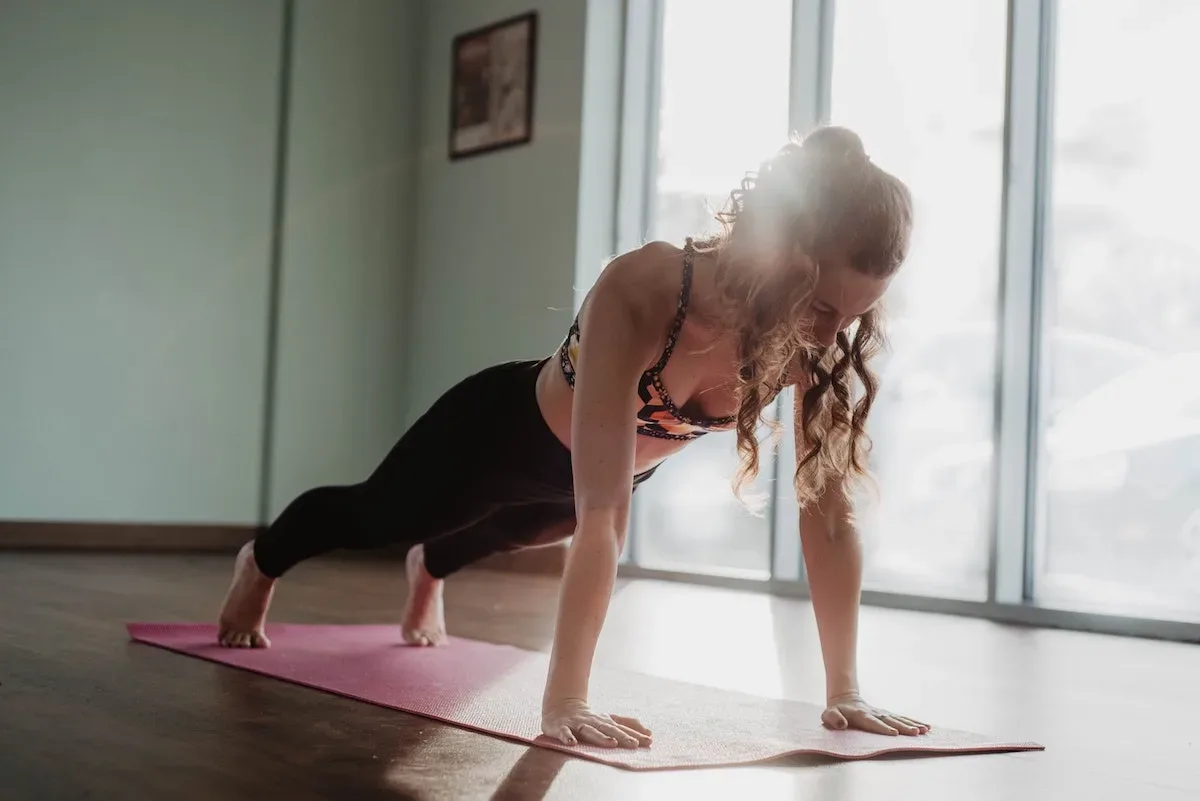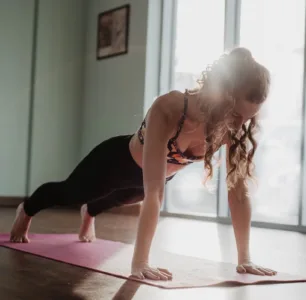When it comes to building a strong core, many people immediately think of crunches and sit-ups. However, there is another exercise that is just as effective, if not more so, and it doesn’t put unnecessary strain on your neck and back: the plank exercise.
What is the plank exercise?
The plank exercise is a static, isometric exercise that targets the muscles in your core, including your abs, back, and shoulders. It involves holding a position similar to a push-up, but instead of lowering yourself to the ground and pushing back up, you hold your body in a straight line from head to heels, supported by your forearms and toes.
Benefits of the plank exercise
The plank exercise offers a number of benefits, including:
- Improved core strength: By holding your body in a straight line, you engage all of the muscles in your core, which helps to build strength and stability.
- Improved posture: When you have a strong core, it helps to support your spine and improve your posture.
- Reduced risk of back pain: A strong core can help to alleviate back pain and reduce the risk of injury.
- Improved balance: The plank exercise can help to improve your balance and coordination.
How to do the plank exercise
To perform the plank exercise, follow these steps:
- Start by getting into a push-up position, with your hands shoulder-width apart and your feet hip-width apart.
- Lower your forearms to the ground, with your elbows directly under your shoulders.
- Keep your body in a straight line from head to heels, engaging your core muscles to support your spine.
- Hold the position for as long as you can, aiming for at least 30 seconds to start.
- When you’re ready to come out of the plank, lower your knees to the ground and rest.
Variations of the plank exercise
Once you’ve mastered the basic plank, you can try these variations for a more challenging workout:
- Side plank: Start in a plank position, then shift your weight to one arm and turn your body to the side, stacking your feet on top of each other. Raise your other arm toward the ceiling and hold for 30 seconds, then switch sides.
- Plank with leg lift: Start in a plank position, then lift one leg off the ground and hold for 10-15 seconds. Lower the leg and repeat with the other leg.
- Plank with shoulder tap: Start in a plank position, then lift one hand off the ground and tap the opposite shoulder. Lower the hand and repeat with the other hand.
In conclusion, the plank exercise is a simple but effective way to build core strength, improve posture, and reduce the risk of back pain.
What muscles are exercised with planks
The plank exercise is an effective way to work multiple muscles in the body, but its primary focus is on the core muscles. These muscles include:
- Rectus Abdominis: This is the main muscle in the abdominal region, commonly known as the “abs.”
- Transverse Abdominis: This muscle is located deep in the abdomen and is responsible for stabilising the spine.
- Obliques: These muscles are located on the sides of the abdomen and are responsible for rotating the torso.
- Erector Spinae: This muscle group is located along the spine and helps to maintain posture and stabilise the spine.
- Quadriceps: These muscles are located in the front of the thigh and help to extend the knee.
- Glutes: These muscles are located in the buttocks and are responsible for hip extension.
- Shoulders: The plank exercise engages the shoulders, which are responsible for supporting the upper body.
By engaging these muscles, the plank exercise can help to build core strength, improve posture, and reduce the risk of back pain. Additionally, because it engages multiple muscle groups, the plank exercise can be an efficient way to work out several areas of the body simultaneously.
Alternative exercises
While the plank exercise is a highly effective way to work the core muscles and build overall strength, there are other exercises that can be used as alternatives or variations to target similar muscle groups. Here are a few alternative exercises to the plank:
- Russian twists: This exercise targets the obliques and rectus abdominis, similar to the side plank variation of the plank exercise. Sit on the floor with your knees bent and feet flat. Lean back slightly, keeping your spine straight. Hold a weight or medicine ball in front of you and twist your torso to the right, then to the left. Repeat for several reps.
- Bird dog: This exercise targets the core muscles, as well as the glutes and lower back. Start on your hands and knees, with your wrists directly under your shoulders and your knees under your hips. Lift your left arm and right leg straight out, holding for a few seconds, then lower and repeat with the opposite arm and leg.
- Dead bug: This exercise targets the transverse abdominis, as well as the rectus abdominis and obliques. Lie on your back with your arms extended straight up toward the ceiling and your knees bent at a 90-degree angle. Lower your left arm and right leg toward the ground, keeping your lower back pressed firmly into the floor, then return to the starting position and repeat with the opposite arm and leg.
- Mountain climbers: This exercise targets the core muscles and also works the shoulders and legs. Start in a high plank position, with your hands shoulder-width apart and your body in a straight line from head to heels. Bring your right knee in toward your chest, then quickly switch to bring your left knee in. Continue alternating legs for several reps.
These alternative exercises can be used to mix up your workout routine and challenge your body in new ways. As with any exercise, it’s important to use proper form and start with lighter weights or repetitions if you’re new to the movement.
How does the plank help rugby playing girls
The plank exercise can be particularly helpful for girls who play rugby, as it is a full-body exercise that targets the core muscles, which are essential for rugby players. Here are a few ways that the plank exercise can benefit rugby-playing girls:
- Improved core strength: The core muscles, including the abs, back, and hips, are critical for generating power and stability in rugby. The plank exercise strengthens these muscles, making it easier to sprint, tackle, and change direction on the field.
- Reduced risk of injury: A strong core can help to prevent back injuries and improve overall posture, which is important for preventing common rugby injuries like strained hamstrings, sprained ankles, and knee injuries.
- Increased endurance: Rugby is a physically demanding sport that requires a high level of endurance. The plank exercise can help to improve overall strength and endurance, making it easier to maintain energy and stamina throughout a game.
- Improved balance and stability: Rugby players need to be able to quickly change direction and maintain balance, especially when running and evading defenders. The plank exercise can help to improve balance and stability, making it easier to stay on your feet and avoid injuries.
- Better mental focus: The plank exercise requires a high level of mental focus and concentration, which can translate to better focus and mental toughness on the field. By regularly practising the plank exercise, rugby-playing girls can improve their mental game and perform better under pressure.
In summary, the plank exercise is a highly effective way for rugby-playing girls to build core strength, improve overall endurance, reduce the risk of injury, and improve mental focus. By incorporating the plank exercise into a regular fitness routine, rugby-playing girls can improve their overall performance on the field and stay injury-free.

